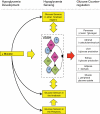Hypoglycemia in type 1 diabetes
- PMID: 20876723
- PMCID: PMC3279554
- DOI: 10.2337/db10-0103
Hypoglycemia in type 1 diabetes
Figures


References
-
- Frier BM. The incidence and impact of hypoglycemia in type 1 and type 2 diabetes. International Diabetes Monitor 2009;21:210–218
-
- Leese GP, Wang J, Broomhall J, Kelly P, Marsden A, Morrison W, Frier BM, Morris AD. DARTS/MEMO Collaboration Frequency of severe hypoglycemia requiring emergency treatment in type 1 and type 2 diabetes: a population-based study of health service resource use. Diabetes Care 2003;26:1176–1180 - PubMed
-
- McCrimmon RJ, Frier BM. Hypoglycaemia: the most feared complication of insulin therapy. Diabete Metab 1994;20:503–512 - PubMed
-
- McCrimmon RJ, Frier BM, Deary IJ. Appraisal of mood and personality during hypoglycaemia in human subjects. Physiol Behav 1999;67:27–33 - PubMed
Publication types
MeSH terms
Substances
Grants and funding
LinkOut - more resources
Full Text Sources
Other Literature Sources
Medical

